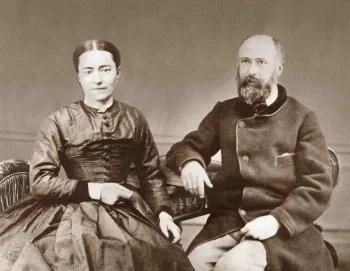Pope Leo XIV issues a letter about Sts. Louis and Zelie Martin on the tenth anniversary of their canonization, October 18, 2025
/COMPOSITE PHOTO OF STS. ZELIE AND LOUIS MARTIN,
COURTESY OF THE SHRINE AT ALENCON
Today the Vatican released Pope Leo’s letter for the tenth anniversary of the canonization of Sts. Louis and Zelie Martin, written on October 1, the feast of St. Therese, to Mgr Bruno Feillet, bishop of Séez, the diocese where Sts. Louis and Zelie lived throughout their marriage and where all their children were born.
Pope Leo writes:
As the first couple to be canonized as such, this event is of particular importance as it highlights marriage as a path to holiness. . . . “Louis and Zélie understood that they could become saints not despite marriage but through, in and by marriage, and that their marriage should be considered as the starting point of a journey together” (Cardinal Martins, Homily for the Beatification).
Later, he speaks of the family as a place in which to experience the boundless love of Jesus and to love Him in return:
Dear couples, I invite you to persevere courageously on the path you have undertaken, which is sometimes difficult and laborious, but luminous. Above all, put Jesus at the centre of your families, your activities and your choices. Help your children discover His boundless love and tenderness, and strive to make them love Him in return as He deserves: this is the great lesson that Louis and Zélie teach us today, and which the Church and the world so urgently need. How could Thérèse have loved Jesus and Mary so much – and then passed on such a beautiful doctrine to us – if she had not learned it from her saintly parents from an early age?
Please see the text of Pope Leo’s letter.
















